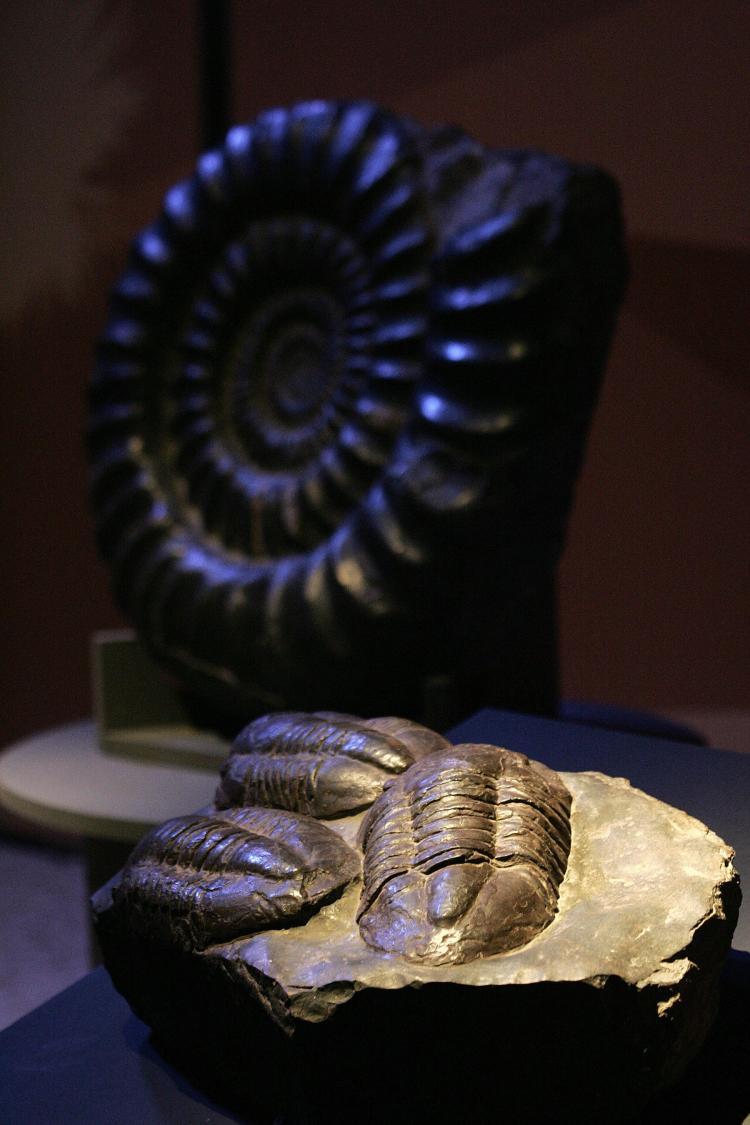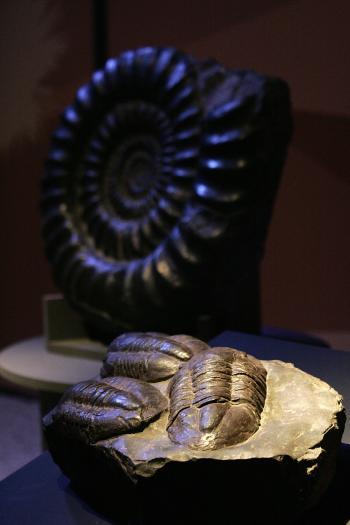
Fossils of three trilobites from Morocco on display in the exhibition 'America Migrante' (Migrant America) during the Universal Forum of Cultures Monterrey 2007, in Monterrey, Mexico, in October 2007. Alejandro Acosta/AFP/Getty Images
It was a hot night so a man decided to take a walk along the beach. Soon after setting out, he felt a soft crunch under his foot. He stopped to inspect the soles of his shoes in the moonlight, and scraped off the remains of the unfortunate creature he had squashed. Unconcerned, he continued his stroll, unaware that the footprint had immortalized the end of that tiny life. After all, what’s so strange about stepping on a trilobite?





